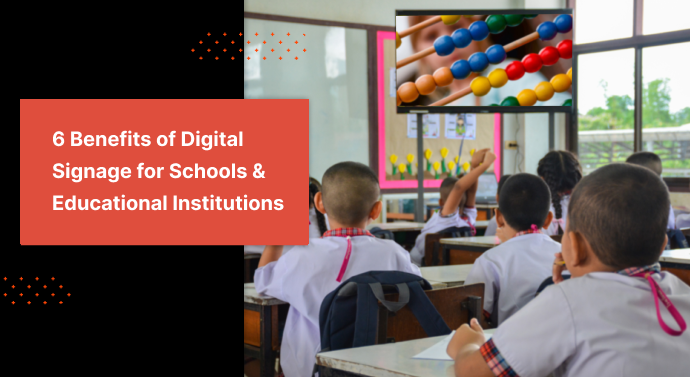Digital signage software has emerged as a powerful tool for educational institutions, including schools, universities, and colleges. This technology goes beyond traditional forms of communication, such as static posters and bulletin boards, by offering dynamic, interactive, and real-time information dissemination.
Here are the top benefits of digital signage software in educational settings:
Enhanced Communication:
Digital signage allows educational institutions to communicate information more effectively. Whether it’s important announcements, event schedules, or emergency alerts, digital displays offer a visually engaging way to convey information. Dynamic content can capture attention, ensuring that the intended message reaches the target audience.
Real-Time Updates:
One of the significant advantages of digital signage is the ability to provide real-time updates. This is particularly crucial in a dynamic educational environment where schedules, events, and announcements can change frequently. Digital displays enable instant updates, ensuring that students, faculty, and staff are always informed with the latest information.
Cost-Effective and Eco-Friendly:
Digital signage eliminates the need for printing and distributing paper materials, reducing costs associated with traditional forms of communication. This not only saves money but also aligns with sustainability initiatives, making it an environmentally friendly solution.
Engaging Educational Content:
Interactive displays can be used to showcase educational content, creating an immersive learning experience. Schools, universities, and colleges can leverage digital signage to display dynamic content such as educational videos, presentations, and student projects. This engages students and enhances the overall learning environment.
Event Promotion:
Digital signage is an effective platform for promoting school events, university seminars, or college activities. Institutions can use dynamic displays to showcase event details, dates, and featured speakers, creating anticipation and boosting attendance.
Emergency Notifications:
In times of emergencies, quick communication is critical. Digital signage allows educational institutions to display emergency alerts and instructions instantly. This ensures the safety of students and staff by providing clear and immediate guidance.
Wayfinding and Campus Navigation:
Large educational campuses can be challenging to navigate. Digital signage can serve as interactive wayfinding tools, guiding students and visitors to specific locations. This improves overall campus navigation, reducing confusion and enhancing the overall experience.
Student Engagement and Motivation:
Interactive and visually appealing content on digital displays can capture the attention of students. This technology can be used to showcase student achievements, upcoming events, and motivational messages, fostering a positive and inspiring atmosphere within the educational institution.
Centralized Control and Management:
Digital signage software typically comes with centralized control and management features. This allows administrators to update content, schedule displays, and monitor the entire signage network from a single location. This centralized control streamlines the management process and ensures consistency across multiple screens.
Branding and School Spirit:
Digital signage provides an opportunity to showcase the identity and spirit of the educational institution. Customizable templates and branding elements can be incorporated into the content, reinforcing school pride and creating a cohesive visual identity across the campus.
Conclusion:
Cloud based Digital signage system has become a valuable asset for schools, universities, and colleges, offering a myriad of benefits. From improving communication and engagement to providing real-time updates and enhancing campus navigation, this technology has the potential to transform the educational experience. As institutions continue to embrace digital signage, they are not only keeping pace with technological advancements but also creating a more connected, informed, and vibrant learning environment for students, faculty, and staff.


